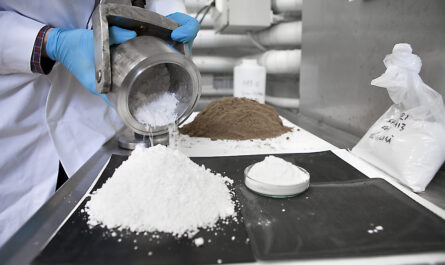
Urea Formaldehyde is a thermosetting resin that has gained significant importance in various industries due to its versatile properties and wide range of applications. It is a synthetic polymer formed by the reaction of urea and formaldehyde under controlled conditions. Urea formaldehyde resin is known for its excellent bonding strength, heat resistance, and dimensional stability.
Urea formaldehyde resin possesses several desirable properties that make it suitable for a variety of applications. One of its key characteristics is its high bonding strength. Urea formaldehyde resin can form strong bonds with various materials, including wood, particleboard, plywood, and textiles. This property makes it a popular choice in the wood industry for manufacturing plywood, particleboards, and laminated wood products. It provides excellent adhesion and enhances the structural integrity of composite materials.
Another important feature of urea formaldehyde resin is its heat resistance. It can withstand high temperatures without significant degradation, making it suitable for applications that require thermal stability. Urea Formaldehyde resin also exhibits excellent dimensional stability. It has a low coefficient of expansion, which means it is less prone to shrinkage or expansion with changes in temperature and humidity. This characteristic makes it ideal for applications where dimensional accuracy is critical, such as in precision engineering, moldings, and electrical enclosures.
The versatility of urea formaldehyde resin extends to its wide range of applications across different industries. In the construction industry, it is widely used in the manufacturing of plywood, fiberboards, and particleboards. These materials find applications in furniture, flooring, cabinets, and architectural structures. Urea formaldehyde resin provides strength, durability, and moisture resistance to these products, making them suitable for both interior and exterior use.
The Urea Formaldehyde Market was assessed at US$ 14,716.7 million in 2022, and from 2023 to 2030, it is predicted to increase at a CAGR of 3.27%. Due to the increased usage of commercial resins and the identification of novel applications, the global market for urea formaldehyde is expanding rapidly. Moreover, the market is expanding as a result of the rising need for well-structured polymers.
In the automotive industry, urea formaldehyde resin is utilized for various components, including interior trims, dashboard panels, and door panels. It’s dimensional stability and heat resistance make it a preferred material choice for these applications, where exposure to high temperatures and harsh conditions is common.
Textile and apparel industries also benefit from the use of urea formaldehyde resin. It is commonly employed as a finishing agent in fabric treatment to enhance wrinkle resistance, crease recovery, and shrinkage control. Urea Formaldehyde resin-based finishes provide a crisp appearance to textiles and improve their durability.
While urea formaldehyde resin offers numerous advantages, there are some considerations to be aware of. One important aspect is its potential to release formaldehyde gas, particularly during the manufacturing process and under certain conditions. Formaldehyde is a volatile organic compound (VOC) that can cause health concerns, such as respiratory irritation and allergies, when present in high concentrations. However, stringent regulations and industry standards are in place to ensure the safe handling and use of urea formaldehyde-based products.


